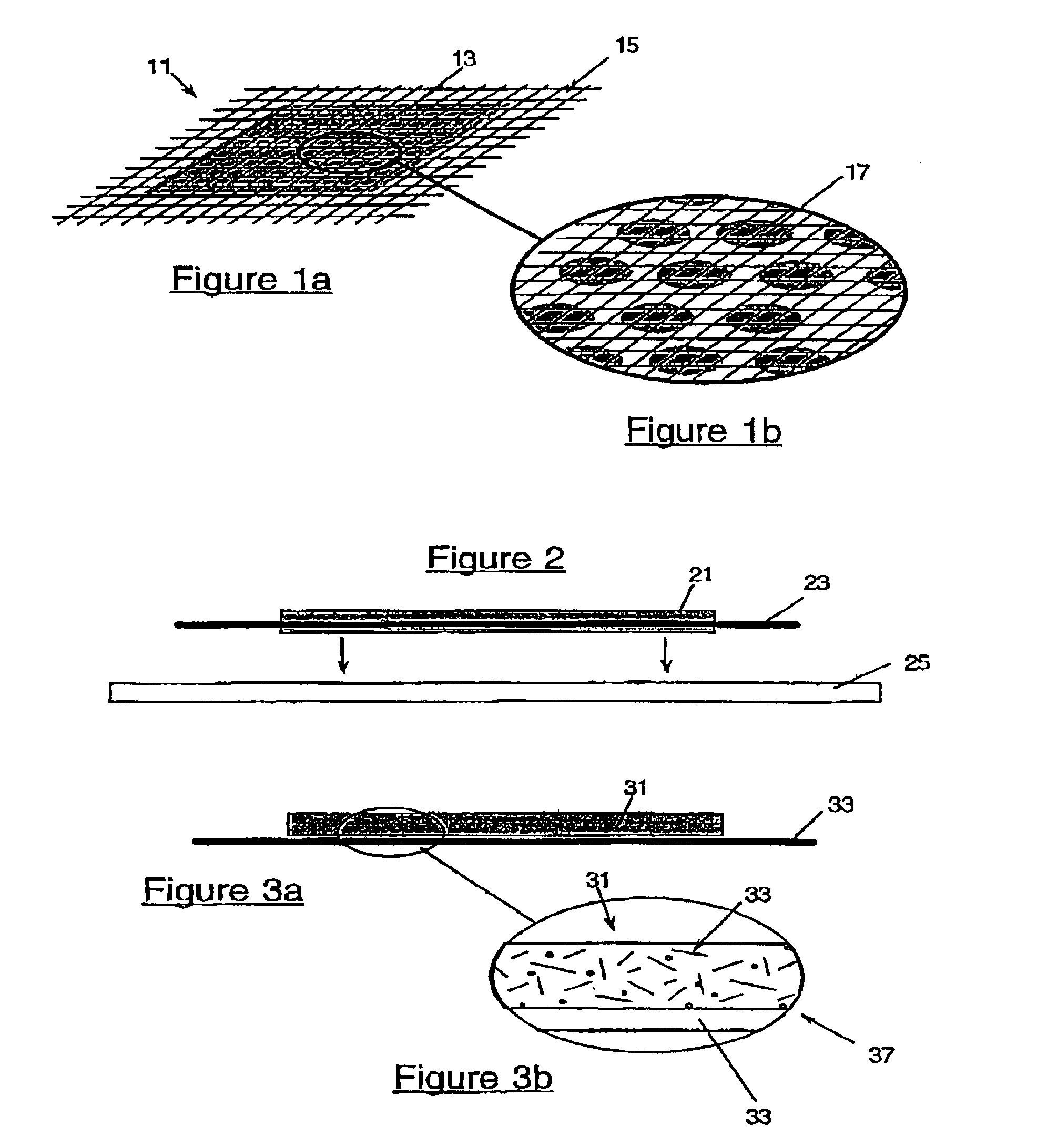Honey based wound dressing
a honey and wound dressing technology, applied in the field of honey in medical dressings, can solve the problems of slow healing process, relatively fluid nature of honey, and relatively time-consuming techniques to apply and maintain, and achieve the effect of easy trimming to shape and varied degree of flexibility and softness
- Summary
- Abstract
- Description
- Claims
- Application Information
AI Technical Summary
Benefits of technology
Problems solved by technology
Method used
Image
Examples
example 1
[0091]This group of examples is based on the use of alginates as a gelling and viscosity increasing agent for honey.
[0092]As a general procedure, finely powdered sodium alginate (the use of other alkaline metal alginates may also be considered) is blended with honey warmed to approximately 60° C. It is desirable that this temperature is not exceeded so as to avoid degradation of any hydrogen peroxide producing enzyme in the honey.
[0093]As the alginate slowly dissolves and absorbs water from the honey, a gel begins to form. Stirring should continue during this process so that as any yet unblended and ungelled alginate does nor settle out.
[0094]At this point a number of optional procedures may be followed depending upon the nature of the final product. For instance:
example 1a
[0095]For high viscosity products (e.g. sheets) the gel should be rolled into a sheet of the desired thickness as soon as it has gelled sufficiently to be able to handle the rolling procedure. The sheets should be maintained at a temperature high enough for hydration of the alginate to be completed and the full viscosity to be achieved for this particular product. By way of example this may be 60° C. for approximately one hour, or for longer periods at lower temperatures. This may vary according to the nature of the selected honey, the properties of the alginate selected etc., and thus some minor trial experimentation may be required to achieve an embodiment having the precise characteristics required by the user.
example 1b
[0096]As an alternative to Example 1a, a low viscosity product (e.g. a gel formulation or some putties) the blended mixture should be held at the elevated temperature to allow hydration of the alginate to be completed and the full viscosity achieved before it is packed or formed into the desired configuration. Some softer sheet-like embodiments may be also formed according to this method.
PUM
| Property | Measurement | Unit |
|---|---|---|
| body temperature | aaaaa | aaaaa |
| water content | aaaaa | aaaaa |
| temperature | aaaaa | aaaaa |
Abstract
Description
Claims
Application Information
 Login to View More
Login to View More - R&D
- Intellectual Property
- Life Sciences
- Materials
- Tech Scout
- Unparalleled Data Quality
- Higher Quality Content
- 60% Fewer Hallucinations
Browse by: Latest US Patents, China's latest patents, Technical Efficacy Thesaurus, Application Domain, Technology Topic, Popular Technical Reports.
© 2025 PatSnap. All rights reserved.Legal|Privacy policy|Modern Slavery Act Transparency Statement|Sitemap|About US| Contact US: help@patsnap.com


